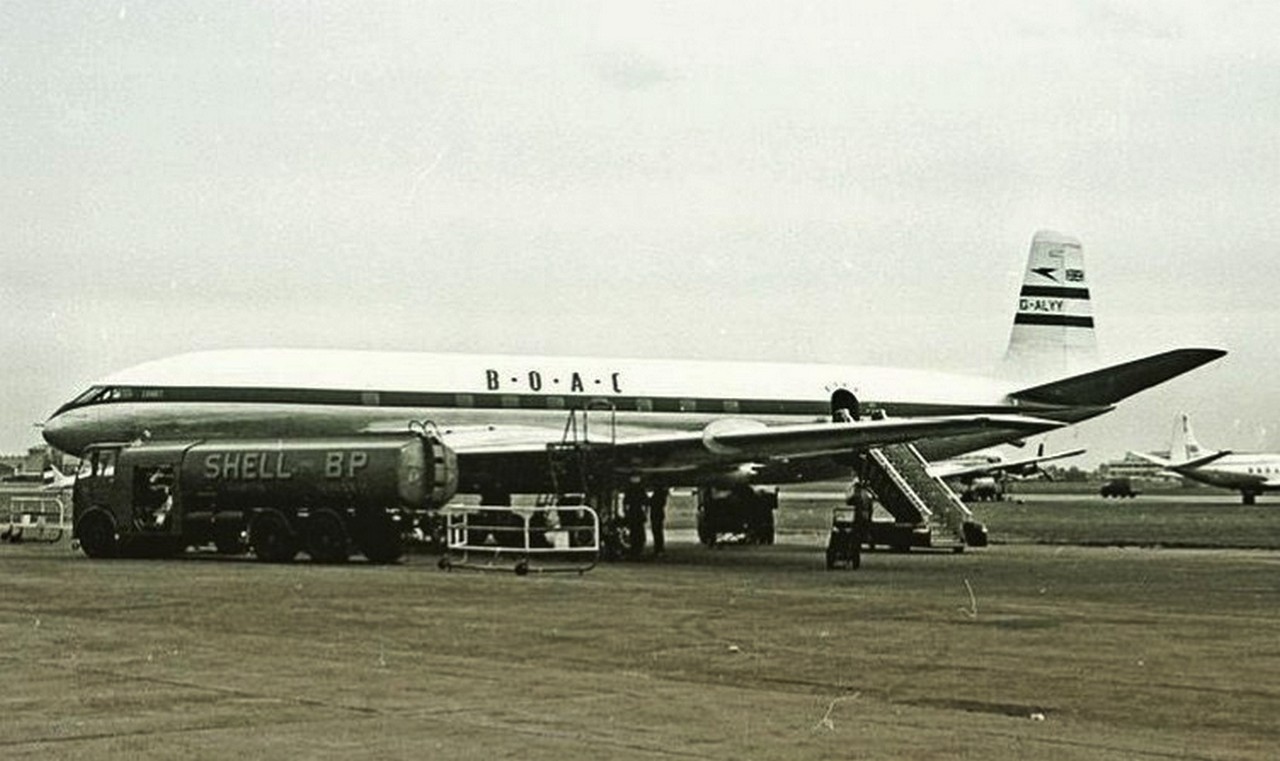The crash of the passenger aircraft "Comet".

On April 8th, it marked the 70th anniversary of the infamous crash of the de Havilland DH-106 Comet 1 passenger aircraft over the Mediterranean Sea. The aircraft (registration G-ALYY), owned by the British Overseas Airways Corporation (BOAC) and chartered by the South African Airways (SAA), was operating flight SA201 on the route London-Rome-Cairo-Johannesburg. Departing from the British capital in the afternoon of April 7th, it successfully arrived in Rome. However, several technical issues were discovered here, which delayed the departure by 25 hours. It wasn't until that 18:32 the next day that the Comet was able to take off for Cairo. The crew of 7 was led by Willem Mostert. There were 14 passengers on board.
The sky was cloudy, but the aircraft quickly passed through them and climbed to a cruising altitude of 11,000 meters. At 19:07, the crew contacted Cairo and reported planning to arrive there in 2 hours. Shortly after that, communication with flight SA201 was lost.
A swift search and rescue operation involving aircraft and ships from several countries began. On April 9th, a large oil slick was found at sea about 120 km from Naples. Subsequently, 5 bodies and separate fragments of the aircraft were found. Another body was washed ashore. Nothing more could be retrieved from the sea as the depths in the area of the incident ranged from 950 to 1060 meters, making it extremely difficult to ascertain the cause of the crash. All those on board were declared dead.
At that time, the Comet remained the only jet airliner in the world. However, the April 8th disaster was already its third in its short history. Just three months prior, a BOAC aircraft crashed near the island of Elba while operating a flight from Singapore to London. Its wreckage was found at depths of 130-180 meters, and it was possible to recover it. However, this work was still ongoing in April, and the investigation into the crash was far from complete. Nevertheless, when conclusions were drawn, they were crucial in understanding the cause of the SA201 flight tragedy.
Although several theories were proposed, the prevailing belief was in the fuselage failure due to metal fatigue. Examination of the wreckage and experiments proved that with their development, cracks in the structure originated at the corners of the square windows in the passenger cabin, leading to explosive decompression.
Immediately after the SA201 crash, Comet operations were halted, and on April 12th, the aircraft's airworthiness certificate was revoked. It took just 4 years for a significantly modernized version of the aircraft to return to the airways, featuring improvements in structural integrity and design.
The investigation into the early Comet crashes influenced the development of passenger aircraft construction worldwide. Windows in pressurized fuselages began to be made circular, elliptical, or with large corner radii, thus avoiding the stress concentration characteristic of rectangular windows.

 Fan-page
Fan-page Youtube
Youtube TikTok
TikTok Aviamuseum
Aviamuseum State Aviation Museum
State Aviation Museum
